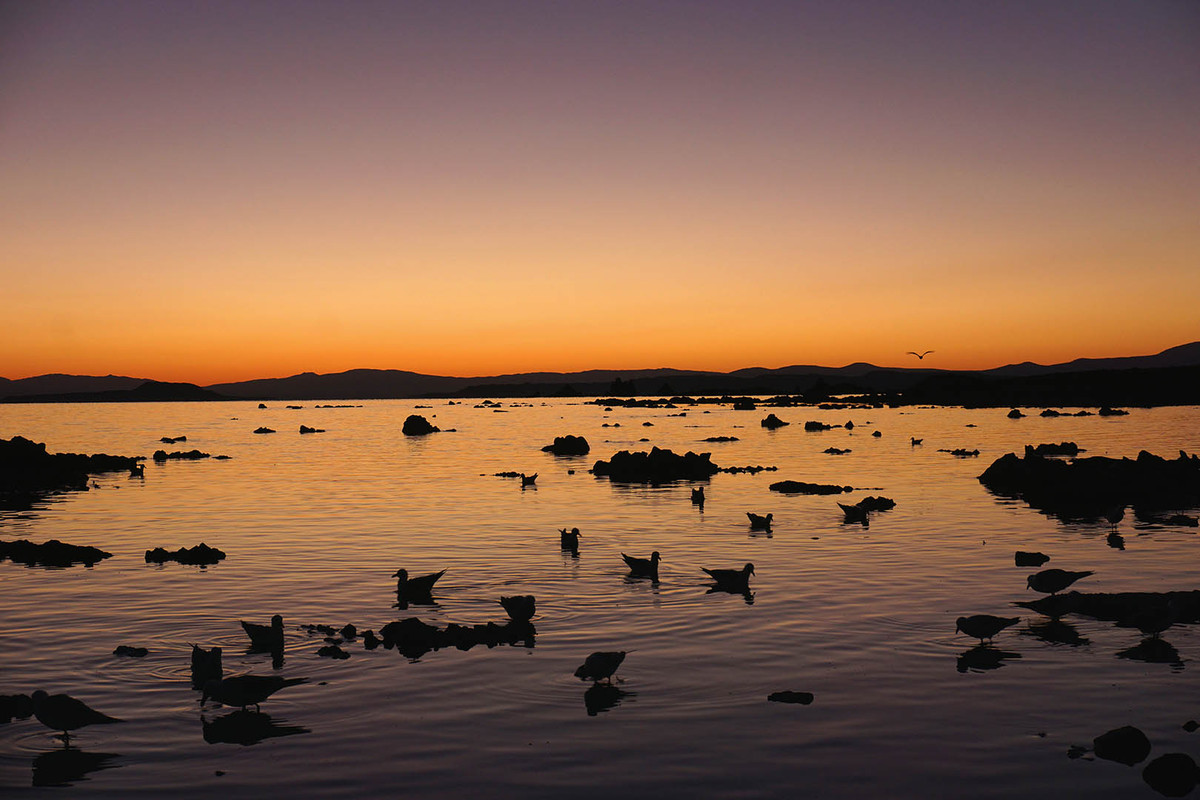For this landscape photographer, I work many more dawn skies than actual sunrises, even with unblocked open views eastward. That is because sky colors are usually more saturated a bit earlier. Much depends on weather with atmospheric clarity and availability of clouds to reflect warm light. Water vapor in atmospheres block much light. The best conditions have low water vapor in lower atmospheres and high clouds above. The towering mountains of the Eastern Sierra Nevada more often have dry clear air, especially when viewing east from above 8,000 feet because the Great Basin to the east has much less water vapor and pollution versus areas west over urbanized California.
The below is downsized for web version of dawn from the west shore of huge Mono Lake at 6600 feet. Original is 5400 by 3600 pixels. Those are seagulls that nest on lake islands. They are eating for breakfast, brine shrimp and alkali brine flies off the surface. Unlike 95% of most other photographers, I don't jack up saturation or created fake color hues in my work, but rather prefer reasonably accurate experienced fidelity.
Another way to capture either sunrise or sunset light is not the sky itself but rather the warm light on landscapes. That is especially effective at high mountain altitudes due to clear air with low water vapor.
Colorful sunsets and dusk skies in my region are limited by heavy cool marine air with lots of water vapor to the extent it often forms fog. In the summer, the California sunsets are far less interesting than those further north in the Northwest because high pressure with few clouds but much fog is most common. Also, highest viewpoints are much lower, at most just a few thousand feet, and considerable lands are private residential owned with public lands at shore levels. Despite less, if I lived right on the coast, I'd be able to capture lots more good sunset skies because they do occur, just not common.



